Research Article Open Access
Bioremediation on Effluents from Magnesite and Bauxite Mines using Thiobacillus Spp and Pseudomonas Spp
| Narayanan Mathiyazhagan and Devarajan Natarajan* | |
| Department of Biotechnology, Periyar University, Salem 636 011, Tamil Nadu, India | |
| Corresponding Author : | Dr. D. Natarajan Assistant professor Department of Biotechnology Periyar University Salem 636 011, India E-mail: mdnataraj@rediffmail.com |
| Received February 18, 2011; Accepted February 24, 2011; Published February 26, 2011 | |
| Citation: Mathiyazhagan N, Natarajan D (2011) Bioremediation on effluents from Magnesite and Bauxite mines using Thiobacillus Spp and Pseudomonas Spp. J Bioremed Biodegrad 2:115. doi: 10.4172/2155-6199.1000115 | |
| Copyright: © 2011 Mathiyazhagan N, et al. This is an open-access article distributed under the terms of the Creative Commons Attribution License, which permits unrestricted use, distribution, and reproduction in any medium, provided the original author and source are credited. | |
Related article at Pubmed Pubmed  Scholar Google Scholar Google |
|
Visit for more related articles at Journal of Bioremediation & Biodegradation
Abstract
The present investigation was carried out to isolate metal tolerant bacterial species from the waste dump of magnesite and bauxite mines, Salem district, Tamil nadu. The result of primary and secondary screening showed two basophilic microbes were isolated from the effluents of mining industry. These two bacterial spp (namely P. aeruginosa and T. ferrooxidans ) were adapted for metal tolerance test, with different concentrations of (20 to 100μg/ ml -1 ) heavy metals (Zn, Mn, Cu, Cr and Hg). The P. aeruginosa and T. ferrooxidans showed high resistant to all metals. The minimum inhibitory concentration (MIC) of T. ferrooxidans tolerate upto 200 μg/ml -1 and P. aeruginosa posses MIC up to 150 μg/ml -1 concentration of heavy metals in order of Mn > Fe > Cu > Cr > Hg. These bacteria also expressed some antibiotic resistant potentiality was calculated by Antibiotic Resistant Index (ARI). The pre and post treated soils were analyzed by Atomic Absorbance Spectrophotometer (AAS) for heavy metals. The results of biosorption process showed the T . ferrooxidans reduced/ absorbed some heavy metals from mines (Cd, Ca, Zn, Cr, Mn & Pb) and P. aeruginosa was effectively absorbing the most of the metals than T. ferrooxidans . Both species are effectively absorbing Cd, Ca, Zn followed by Pb. This study include role of pH are also discussed. This study will be encourages further toxic metals remediation program and safe the environment in future.
| Keywords |
| Mining sites, Heavy metal, Antibiotic resistance, Remediation |
| Introduction |
| Mine wastes have been generated from mining activities for several centuries. Mine tailings usually contain high concentrations of metals (Cu, Zn, Fe, Mn, Ni, Pb and Cd etc.) ranging from 1 to 50 g·kg-1 [1]. Metals are a significant toxic factor to biota in the environment. Moreover, they affect all groups of organisms (bacteria, fungi, yeast and algae) and ecosystem processes, including microbial mediated processes and activities [2-5]. There are several remediation approaches have been developed such as excavation, land fill, thermal treatment, electro reclamation and soil capping but all are expensive and environmentally destructive [6]. Bioremediation technology has provided an alternative to conventional methods for remediating the metal-polluted soils [7]. The microbiological processes are significance in determining metal mobility and have actual potential application in bioremediation of metal pollution [8,9]. According to Ge et al. [10] the several approaches have been taken to reclamation of metal contaminated soil by bioremediation process. The Acidithiobacillus spp were abundantly found in acid and metal containing environment with low pH such as acidic drain waters and acidic hot springs. The most wellknown species is T. ferrooxidans, for treating heavy metal contaminated tailing and soils, and which is industrially exploited in bio-leaching of metal sulfide and uraninite ores [11,12]. The P. aeruginosa is an effective bacterium for the reclamation of oil/metal contaminated soils [13] by producing surfactants and tolerate to certain heavy metals. A number of mine tailing reclamation studies have emphasized a strong association between the establishment of a stable plant community and abundance and composition of microorganisms [1]. A few reports focused on indigenous microbes and plant-microbe symbionts tolerate high heavy metal concentrations in different ways and may play a significant role in the restoration of contaminated soil [14]. There is an urgent need to study the occurrence of indigenous microorganisms in heavy metal polluted sites. It may provide new insight into bacterial diversity under unfavorable conditions, new isolates and probably new genetic information on heavy metal resistance, which could be exploited in revegetation in future [15]. There are several researchers have been measured the soil microbial activities as indicators of heavy metals containing soil environment. The main aim of present investigation is to evaluate the potential of T. ferrooxidans and P. aeruginosa from the mining site, for removing heavy and toxic metals ions from the waste dumps of magnesite and bauxite mines. |
| Materials and Methods |
| Sample collection |
| The soil samples were collected from the waste dump sites of magnesite (+11° 43’ 29. 48″ N latitude, +78° 6’ 26. 28″ E longitude) and bauxite (+11° 49’ 58. 63" N latitude, +78° 13’ 48. 60″ E longitude) mining industries, Salem District, Tamilnadu, India. The collected soil samples were air dried and sieved (mesh 2×2 mm) to break soil clumps and to remove large soil particle and the sieved soils were stored in polyethylene bags at 4oC [16] for subsequent experiments. |
| Soil analysis |
| The pH of soil samples was determined with glass electrode pH meter. The measurement was performed by dipping the electrode in the supernatant solution prepared by 5g of soil and 12.5 ml of distilled water [17]. The total heavy metal contents in the effluent of mining industries were analyzed by an acid digestion method, add HCL and concentrated HNO3 in the ratio of 3:1 by the modified method of Say et al. [18]. The digested liquids were filtered through filter paper (Whatman No. 0.5) and the filtrates were analyzed for the heavy metals content using atomic absorption spectrophotometer (Sens AA, GBC Scientific equipment). |
| Isolation of target bacterial strains |
| One gram of soil sample was taken for serial dilution process. 100µl of two different dilution (10-4 & 10-5) of extracts were inoculated in a 9K (selective media for T. ferrooxidans) and centrimide agar medium (selective media for P.aeruginosa) containing plates by using standard spread plate method (pH is 2 to 3). The selection of above media was based on earlier reports of Xiluo Hao et al. [19] and Natarajan [20] to isolate the T. ferrooxidans and P. aeruginosa from the waste dumps of mines by using selective media and determine their metal tolerance and metal sorption capacities. The inoculated plates were incubated at 38°C for two days. The isolated T. ferrooxidans and P. aeruginosa was also characterized by performing gram staining, motility, bio chemical and sulfur reduction test; and the results were compared with Bergey's manual. |
| Metal adaptation and minimum inhibitory concentration (MIC) |
| The metal sorption efficiency of T. ferrooxidans and P.aeruginosa cultures were adapted to metal tolerant test with some metals [21]. The T. ferrooxidans and P.aeruginosa cultures were spread on nutrient agar plates supplemented individually with five different metals (Zn, Mn, Cu, Cr and Hg) in the concentration range of 20 to 100 µg/ml-1. The inoculated plates were incubated at 38°C for 3 to 5 days. After the incubation, colonies from metal containing plates were counted (Figure 1 - 7). MIC of heavy metals for each isolated bacteria (T. ferrooxidans and P.aeruginosa) was determined by a modified method of Luli et al. [22] and Calomiris et al. [23] by spread 250µl of each cultures on plates containing several concentrations (25 to 200µg/ml-1) of various heavy metals (such as Zn, Mn, Hg, Cu and Cr) and the plates were incubated at 38°C for 48hours. |
| Antibiotic susceptibility test |
| The antibiotic sensitivity potentiality of T. ferrooxidans and P.aeruginosa were determined by using disc diffusion method [24-25]. These two bacterial cultures were spread on Muller Hinton agar and placed the antibiotic impregnated disc on top of the plate (Neomycin (30 mcg), Gentamycin (10mcg), Chloramphenical (30mcg), Ampicillin (10mcg), Amoxycillin (10mcg) and endofloxacin (10mcg)). The plates were incubated at 38°C for 24hours to examine the zone of growth inhibition. The results were classified as resistant or sensitive [25] and antibiotic resistant index (ARI) was calculated as per Hinton et al. [26] formula. |
| Bioremediation /metal sorption |
| The isolated bacteria (T. ferrooxidans and P. P.aeruginosa) was adopted to analyze their metal sorption or removal capabilities on effluents (waste soil) of magnesite and bauxite mining industry as per the modified method of Atac Uzel and Guven Ozdemir [27]. 100 ml of nutrient broth (pH 6.37) was taken in 250 ml Erlenmeyer conical flasks and add 5 grams of sterile metal containing mine soil. About 5ml of young cultures of T. ferrooxidans and P.aeruginosa were inoculated at exponential growth phase. The control medium (nutrient broth with soil and without the culture) was also maintained (pH 6.30). The test and control medium were continuously stirred and incubate on a rotary incubator (Everflow) on 160 rpm at 38°C for 8 days. While the sorption process, pH was noticed every 24 hours interval (24, 48, 72, 96, 120, 144, 168 and 192 hours). After the incubation, the soil was filtered by using filter papers and filtered soils were dried and digested with acids (HCL and HNO3 in the ratio of 3:1) and analyzed the metals in the treated and control soil by using atomic absorption spectrophotometer (Sens AA, GBC Scientific equipment). |
| Results and Discussion |
| Bacterial analysis and metal adaptation |
| The results of present investigation showed two bacterial species (T. ferrooxidans and P. aeruginosa) were isolated and characterized from the waste dumps of mining industry. These bacterial species are effective in bioleaching, bioaccumulation of metal, ores beneficiation and desulfurization of fossil fuel and metal contaminated soils [28]. The T. ferrooxidans and P. aeruginosa showed resistant to different heavy metals (Zn, Mn, Cu, Cr and Hg) in various concentrations (20 to 100 µg/ml-1). The metal tolerant potentiality was observed in the order of Zn> Mn> Cu> Cr> Hg, based on the number of colonies were observed in the plates. The numbers of colonies were varied to each metal at different concentrations (Figures 1-5). The results highlighted that more numbers of colonies (85 1o 13 and 86 to 15) were observed in several concentrations (20 to 100 µg / ml-1) of Zn and Mn followed by Cu and Cr (83 to 12 and 74 to 9) and least number of bacterial colonies were obtained in Hg (71 to 0). This study was also comparable to the work of Oliveira et al. [29] reported that the isolation of mercury and chromate tolerant diazotrophic bacteria from the long term contaminated soil and industrial effluents. |
| MIC determination |
| The results of bacterial populations were decreased with increasing concentrations of various heavy metals (Zn, Mn, Cu, Cr and Hg) indicates that their sensitivity to higher level of heavy metals. The results of MIC of metals for T. ferrooxidans and P. aeruginosa were depicted in Figure 6 and 7). T. ferrooxidans was resistant to various heavy metals (Zn, Mn, Cu, Cr and Hg) at varied concentrations (from 25 to 200 µg / ml-1) than P. aeruginosa. The MIC limit of T. ferrooxidans in Zn and Mn was 150 µg/ml-1 and for Cu, Cr and Hg the limit was 100 µg/ml-1. Similar results were obtained by Dhakephalkar and Chopade [30] investigated on the high level of multiple metal resistant bacteria were isolated from the heavy metal contaminated environment. |
| Response to antibiotics |
| The main objectives of these study was to isolate metal sorption potentiality bacteria's and applied to the remediation purpose (metal resistant), it should not cause any serious threat to the ecosystems especially to human beings. Hence, this study was focused on their antibiotic susceptibility nature of these isolated bacteria for some common antibiotics. The metal tolerant bacterial cultures (T. ferrooxidans and P. aeruginosa) were equally resistant to one antibiotic (ampicillin) and susceptible to remaining 5 antibiotics (such as endofloxacin, gentamycin, neomycin, amoxicillin and chloramphenical) to access their degree of sensitivity (Figure 8). The zone was noticed above 3mm means it considered to be susceptibility and less than 3mm was consider as resistant. The zone of inhibition range for T. ferrooxidans and P. aeruginosa were 3 to 20mm and 3 to 9mm respectively. The results were also correlated with work of Tuhina et al. [25], studied that the derived metal (chromate) tolerant and also antibiotic sensitive and resistant bacteria were isolated from tannery effluent contaminated sites. |
| Bioremediation/ metal sorption on magnesite and bauxite mine soil |
| The microorganisms (bacteria, fungi, algae, and actinomycetes) are highly effective in sequestering heavy metals and these have been used to remove metals from polluted industrial and domestic effluents on a large scale [31]. The biosorption potentiality of the present investigation was showed that the test bacteria posses effective metal sorption efficiency within a short time of treatment process. The waste dump of these mines were treated by T. ferrooxidans and P.aeruginosa, found to be considerable portions of the metals were removed from the mine soil horizons and their residual concentrations, with the exception of those Fe, Cu, Mg and Hg (table 1). The highest rates of heavy metals were observed by P.aeruginosa and T. ferrooxidans from mine soil (Cd, 384 & 370, Ca 49 & 427, Zn 95.24 & 82, Cr 36.99 & 27.99, Mn 26 & 27 and Pb 19 & 16 mg/kg-1 from bauxite and from magnesite mine soil respectively). The highest rates of metals were reduced by T. ferrooxidans (Cd 294 & 280, Ca 29 & 230, Zn 102 & 82, Cr 38.84 & 17.99, Mn 31& 39 and Pb 26 & 24 mg/kg-1 on bauxite and magnesite mine soil respectively) (Figures 9 and 10). This approach was well supported by some researchers; the microorganisms have a high affinity for metals and can accumulate both heavy and toxic metals by a variety of mechanisms [6,32,33]. Wong and So [31] isolated Pseudomonas putida, from electroplating effluent, showing that it accumulated Cu (II), up to 6.5% dry weight, from a Cu (II) containing solution. Murugesan and Vasanthy [34] reported that Pseudomonas spp have high metal sorption efficiency on Cr metal containing environment. Other investigators have demonstrated that the capabilities of several bacteria involved in removal of uranium, Cd, Pb, and other toxic metals from polluted soil [35-39]. The temperature and pH of soil was an essential parameters that affecting the microbial growth, metal utilization and activity on soil of mining industries [28]. The present study showed that during the metal sorption process the pH was reduced as 6.37 to 9.1 and 3.9 to 6.75 (magnesite and bauxite mine treatment respectively) by T. ferrooxidans and P.aeruginosa (Figures 11 and 12). The temperature was included in this study was equal to the field profile (in the range of 25 to 60°C). Among this range of temperature, the metal sorption efficiency was effectively occurred at 38°C and acidic environment the activity was enhanced by the water solutions of soluble organic compounds. This statement was agreed with Muller et al. [40] stated that the acidic environment and average temperature was effectively enhanced the capacity of metal sorption. |
| Conclusion |
| The results obtained from the study revealed that the above-said bioremediation (in situ) method can be very efficient for the treatment of soils contaminated with toxic heavy metals. The target bacterial flora was isolated from the metal containing effluents of mining industries they posse's metal tolerant potential for several heavy metals. These metal resistant potential were made by the metal containing environment (waste dumps of mining industry) and they could posses effective bioremediation or metal sorption potentiality. Among these two bacterial strains P. aeruginosa absorb heavy metals very effectively (in the order of Cd, Zn, Cr and Ca) than T. ferrooxidans. The T. ferrooxidans also reduce the heavy metal contents from the effluents (soil) of mining (Magnesite and Bauxite) industry in a very short period, even growing at pH 2 to 3 and temperature 50°C. Due to heavy metal tolerant and metal absorption potentiality of these bacterial species a suitable choice for bioleaching and bioremediation processes. The antibiotic susceptibility of these metal sorption bacteria indicate that those metal tolerant and metal utilizing bacteria highly sensitive to most of the antibiotics. |
| Acknowledgement |
| The authors would like to express heartfelt thanks to Department of Biotechnology, Periyar University, Salem District, Tamil nadu, India for providing lab facilities. |
References
|
Tables and Figures at a glance
| Table 1 |
Figures at a glance
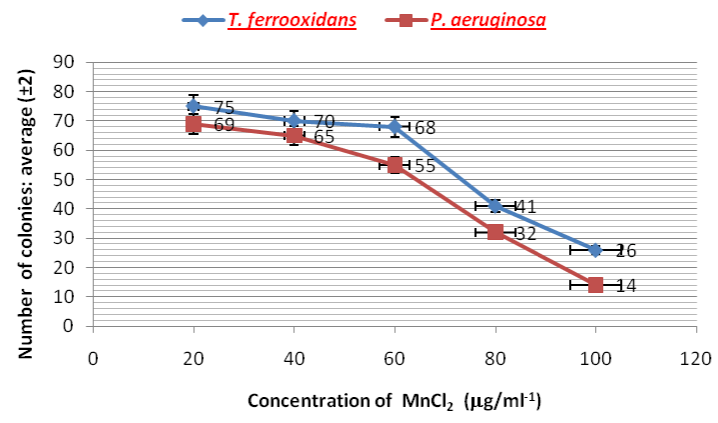 |
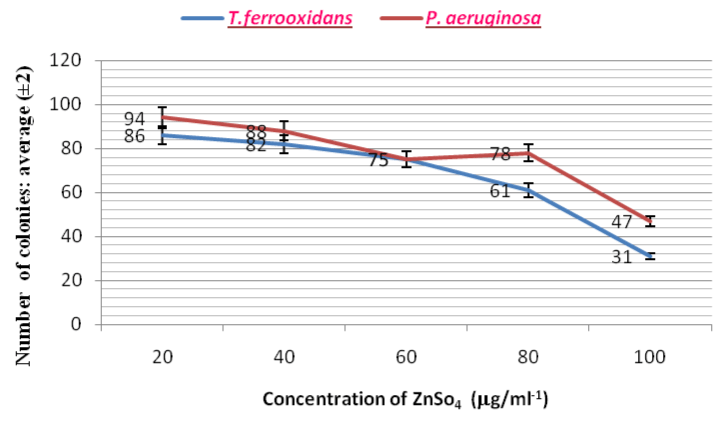 |
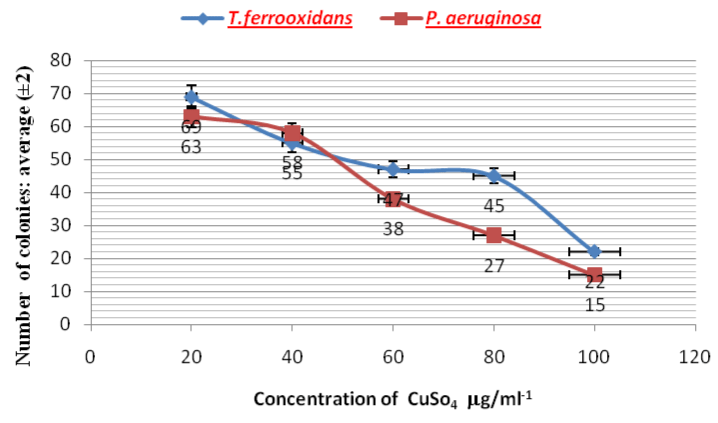 |
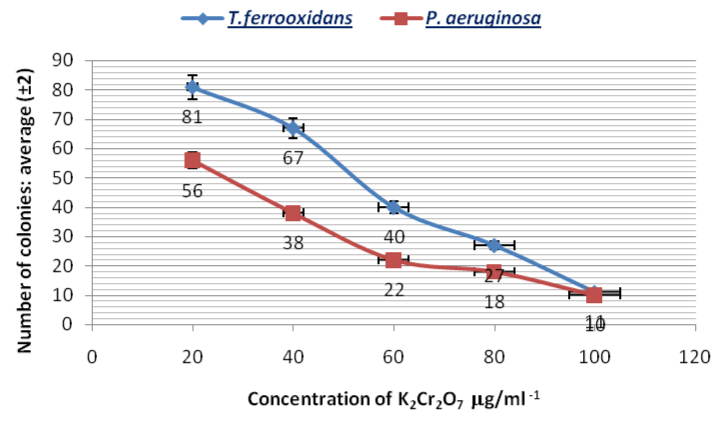 |
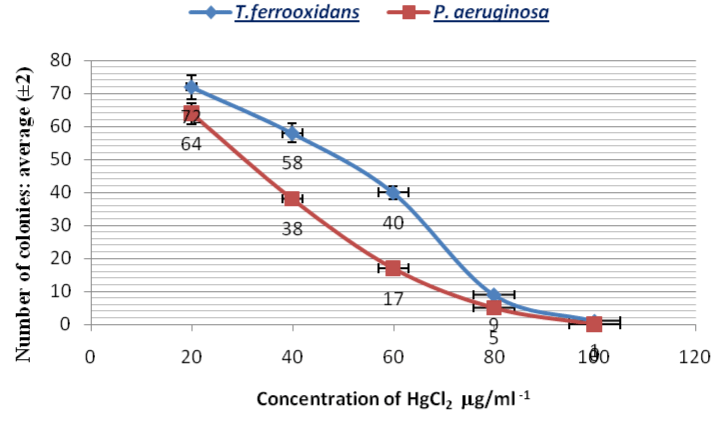 |
| Figure 1 | Figure 2 | Figure 3 | Figure 4 | Figure 5 |
 |
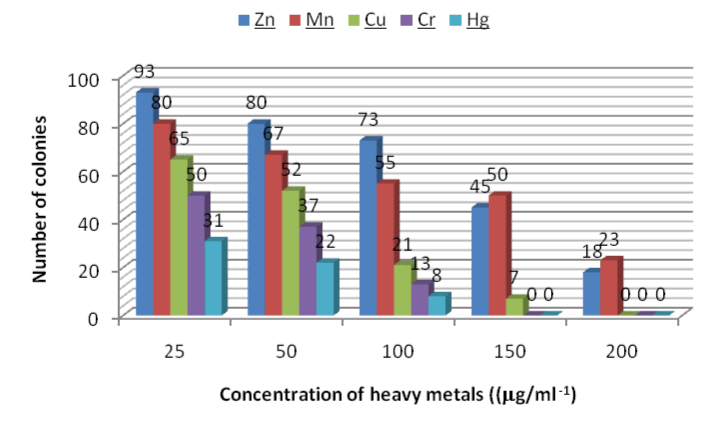 |
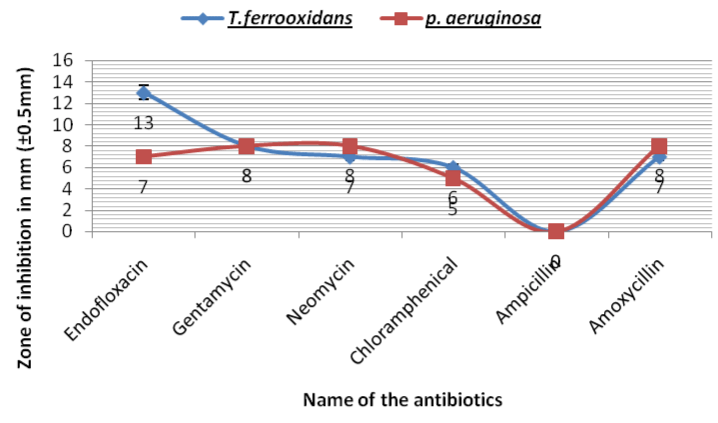 |
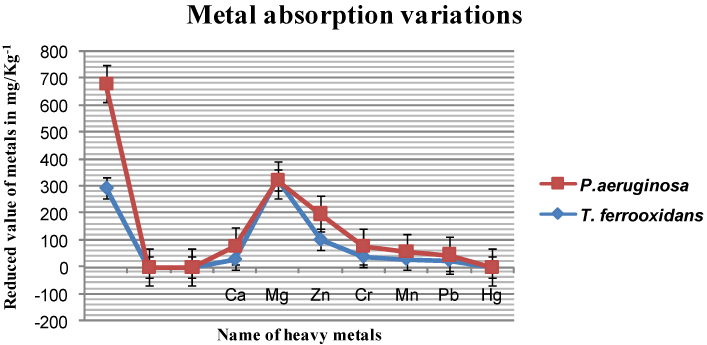 |
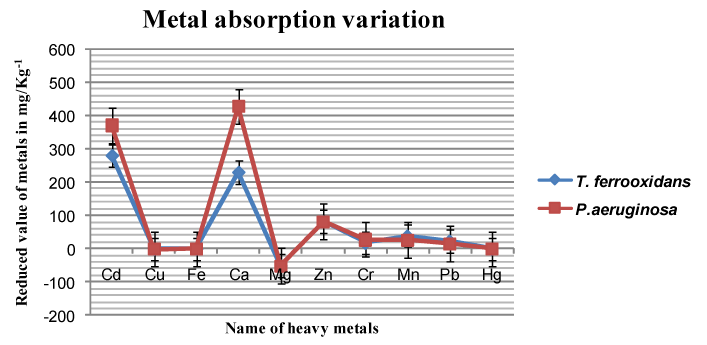 |
| Figure 6 | Figure 7 | Figure 8 | Figure 9 | Figure 10 |
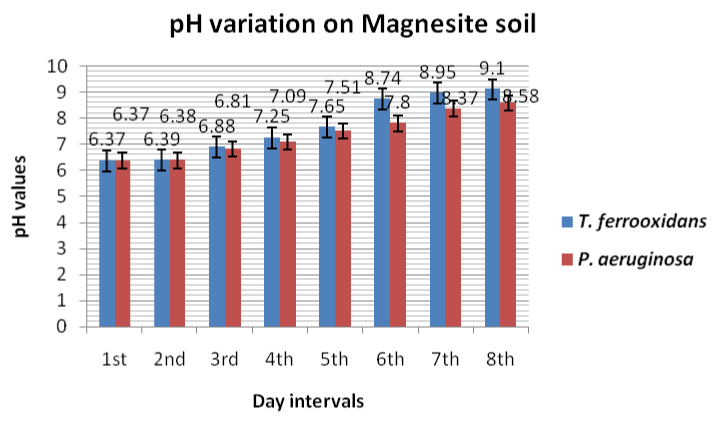 |
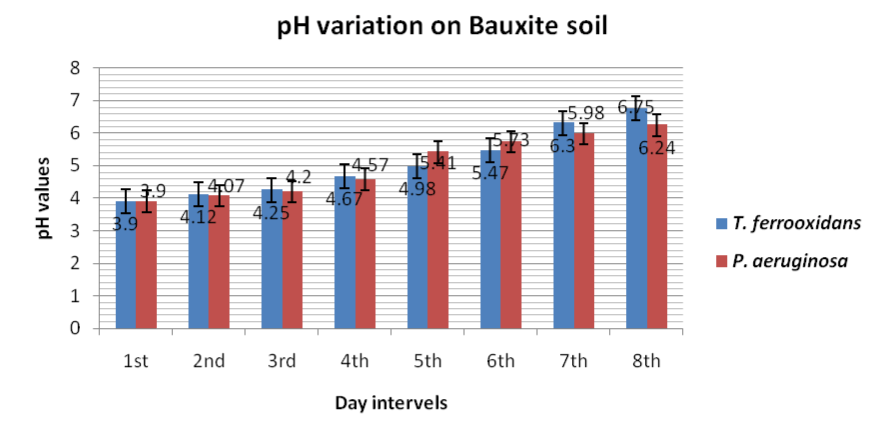 |
| Figure 11 | Figure 12 |
Relevant Topics
- Anaerobic Biodegradation
- Biodegradable Balloons
- Biodegradable Confetti
- Biodegradable Diapers
- Biodegradable Plastics
- Biodegradable Sunscreen
- Biodegradation
- Bioremediation Bacteria
- Bioremediation Oil Spills
- Bioremediation Plants
- Bioremediation Products
- Ex Situ Bioremediation
- Heavy Metal Bioremediation
- In Situ Bioremediation
- Mycoremediation
- Non Biodegradable
- Phytoremediation
- Sewage Water Treatment
- Soil Bioremediation
- Types of Upwelling
- Waste Degredation
- Xenobiotics
Recommended Journals
Article Tools
Article Usage
- Total views: 17082
- [From(publication date):
January-2011 - Dec 25, 2025] - Breakdown by view type
- HTML page views : 12123
- PDF downloads : 4959
